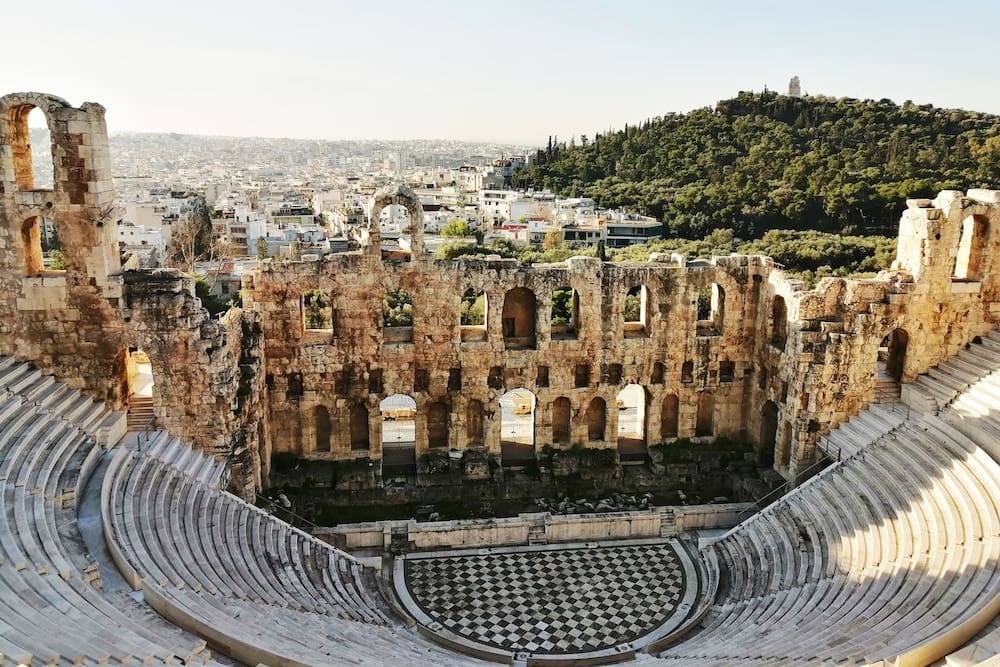Athens is an amazing city full of history, culture and beauty. From ancient ruins to modern-day shopping and nightlife, there is something for everyone to enjoy. Whether you want to explore the Acropolis and the Parthenon or take a stroll through the bustling streets of ancient Plaka, the best sights and things to do in Athens offer a truly unique experience.
You can explore the ruins of the Temple of Zeus and the Agora, or take a day trip to one of the nearby islands. Take a walk through the city’s vibrant neighborhoods and experience the lively street markets. There is no shortage of things to do in Athens, from visiting the National Archaeological Museum to exploring the lively nightlife. With a rich history and vibrant cultural life, Athens is truly a city like no other.
Here are some of the best sights and things to do in Athens.
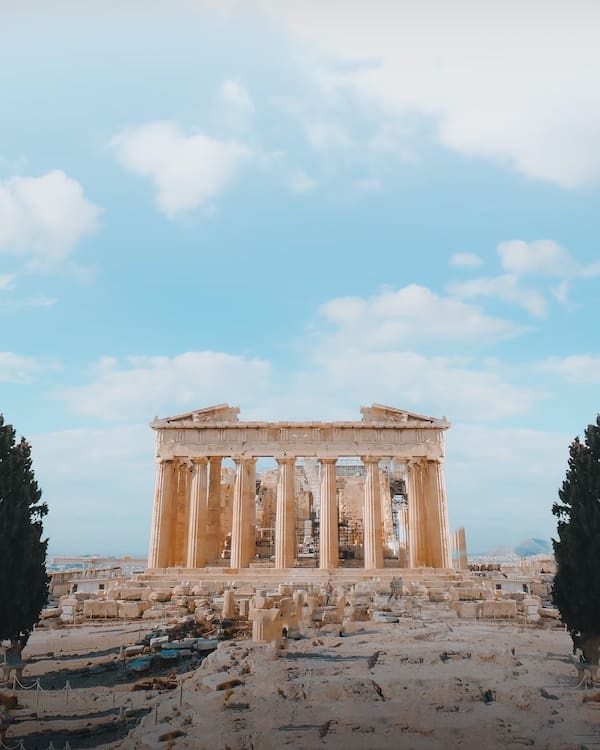
Acropolis & Parthenon
One of the most marvelous views in the world can be found in Athens, with the Acropolis, home of the Parthenon temple, perched atop a precarious peak, having watched over civilizations for centuries. This monument is a representation of the grandeur of the ancient city of Athens. It acted as a citadel located on the high ground.
The Parthenon is the most renowned structure, being the biggest temple from the classical antiquity period, which dates back to 447 and 338 BC. Its remarkable rows of Doric columns and exquisite sculptural details leave a lasting impression. On the east side, carvings show the birth of the goddess Athena.
The Acropolis also features the Temple of Athena Nike at the entrance, and Erechtheion, a gathering of old sanctuaries constructed between 421 and 395 BC. The most famous part of the Erechtheion complex is the Porch of the Caryatids, with statues of maidens taking the place of the traditional Doric columns.
Address: Athens 105 58.
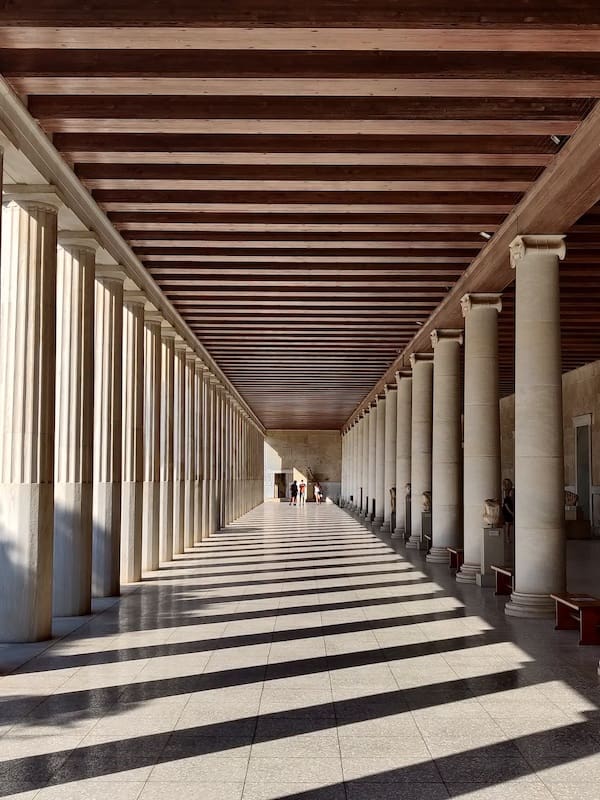
Agora
The Agora was a marketplace and the hub of daily life in old Athens. To get a wonderful view of the Agora from a distance, you can go to the north wall of the Acropolis or the roads leading up to the Areopagus. The most ideal approach to get to the Agora is through the north gate off Adrianoú Street (close to the Church of Saint Philip).
The Greek word “Agora” signifies “to assemble and talk”, which implies that this spot was a place of public discourse. It was additionally a spot of administration, business, and the public gathering of the Agora tou Dimou, a civic choice-making gathering. Athletic competitions and theater plays were additionally held here.
One of the most noteworthy highlights of the Ancient Agora is the Stoa of Attalos, initially constructed by King Attalos II and revived in the 1950s. It is thought to have been the scene of Socrates’ trial in 399 BC.
Another significant site is the striking Temple of Hephaistos, which can be reached on a charming stroll along the footpath that goes up Agora Hill.
Address: Adrianoy 24, Athina 105 55.

The Temple of Olympian Zeus
Built as a tribute to Zeus, the Olympieion, also known as the Temple of Olympian Zeus, was the most colossal temple in ancient Greece. Despite the Parthenon being in better condition, the Temple of Olympian Zeus was considered even more impressive in its time. It was started in the sixth century BC and finished by Emperor Hadrian in the second century AD. At the end of Dionysiou Areopagitou, not far from the entrance of the temple, is Hadrian’s Arch.
One can picture the grandeur of this temple when it was fully erected. Over a hundred enormous marble columns held up the imposing edifice. There are only fifteen columns still standing, with one more on the ground, yet the ruins still give off a sense of the large scale of the original structure. This massive building was a fitting shrine for Zeus—the mightiest of the Greek Gods, known as the King of Gods.
Address: Athens 105 57.
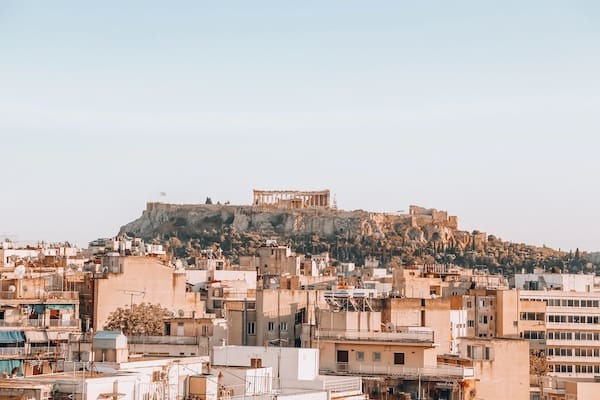
Pláka
Pláka is a popular tourist destination located between the northern hilly parts of the Acropolis and Ermoú Street. It’s most admired for its village-like characteristics: small pedestrian pathways, vibrant squares that are adorned with flourishing bougainvillea around the pastel-colored houses, and a variety of eateries and stores.
In the serene corners, visitors can find churches such as Metamórfosis Church in the southwest and the Church of Kapnikaréa in the north. Taking a stroll through the beautiful area is the perfect way to relax after sightseeing. Anafiotika, which is situated on the slopes of the Acropolis, is another place where tourists can get a real taste of Greek cuisine while enjoying the terrace seating.
In addition, Anafiotika’s medieval winding streets also make it a great spot to explore in the evening.
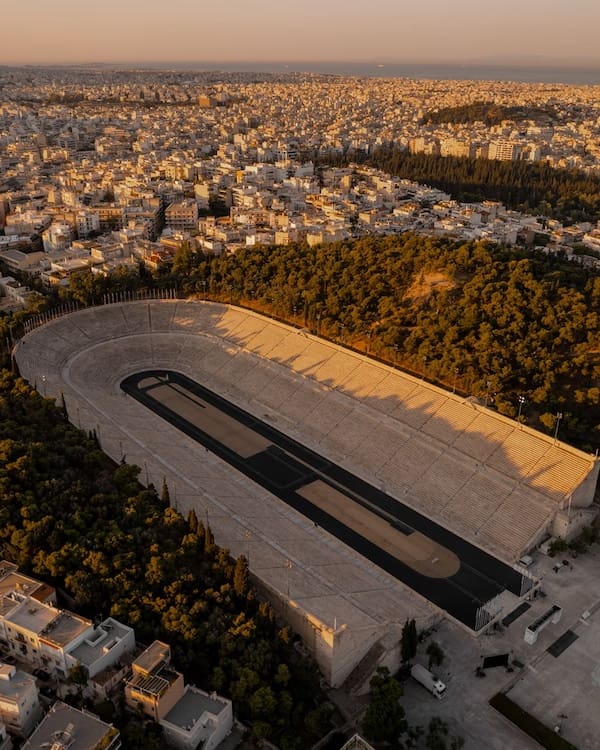
Stadio Panathinaiko
The Panathenaic Stadium, located in Athens and the largest of its kind in the ancient world, could accommodate up to 60,000 people. It was built in 335 BC by Herodes Atticus and served as the venue for the Panathenaic Games, which featured running competitions around the 204-meter-long track that had four double herms.
Around 140 AD, Herodes Atticus refurbished the stadium with marble seating. The present-day stadium, built for the 1896 Olympics, is an exact replica of the original and features 47 rows of seating and a curved southeast end. During summer months, the stadium hosts concerts and other events, making it a perfect spot for an evening in Athens.
Address: Leof. Vasileos Konstantinou, Athina 116 35.

Monastiraki & the Flea Market
The Athens Flea Market in Monastiraki is renowned for its rows of shops selling an array of items from jewelry and trinkets to clothing and everyday goods. The distinct atmosphere of this neighborhood makes it an ideal place to hang out on a patio or take a leisurely stroll. Diners in the area will find an abundance of restaurants offering traditional Greek meals such as gyros.
Monastiraki is more laid-back compared to the chic Plaka district. Monastiraki Square, with its blend of old and new buildings, is a great point of reference. A sign on one side of the square indicates the way to the Flea Market. From the square, visitors can witness the Acropolis on the horizon, and the Hadrian’s Library is just a short walk away.
Address: Ifestou 2, Athina 105 55.
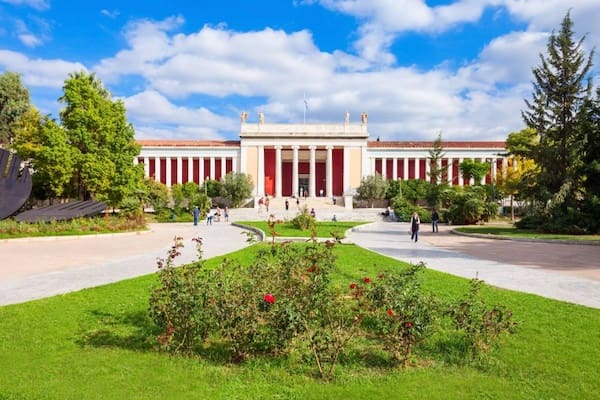
National Archaeological Museum
Established in the 19th century, Athens’ National Archaeological Museum is the largest of its kind in Greece and one of the most renowned antiquities museums in the world. This majestic Neo-Classical edifice offers 8,000 square meters of exhibition area which includes five permanent collections with over 11,000 items giving a thorough overview of Greek culture from pre-historic times to late antiquity.
The Prehistoric Collection, which consists of artifacts from the sixth millennium BC to 1050 BC (Neolithic, Cycladic, and Mycenaean eras) and items from the prehistoric settlement of Thera, is particularly noteworthy.
The Sculpture Collection displays ancient Greek sculptures. It ranges from the sixth century BC to the fifth century BC, including some rare masterpieces. The Vase and Decorative Objects Collection boasts ancient Greek pottery from the 11th century BC to the classical Roman era.
Address: 44 Patission Street, Athens.

Plateia Syntagmatos
For a lot of travelers, observing the Change of the Guard at Syntagma Square (Plateia Syntagmatos) is a thrilling and unforgettable experience. The Troops of the Presidential Guard remain in front of the Hellenic Parliament on Syntagma Square all day, every day, all year. The guards are dressed in traditional attire that includes pleated skirts, ankle tassels, and pompom shoes.
The Change of the Guards takes place in front of the Tomb of the Unknown Soldier monument at 11 am every day. This memorial pays tribute to the anonymous soldiers who passed away while combating for the nation. The monument presents a marble relief that imitates a warrior’s grave stele from ancient times.

Lycabettus Hill
When you take in the sight of Athens from the Acropolis, you may be curious about the hill in the distance. That is Lycabettus Hill and it is worth exploring. The view from the summit of Lycabettus Hill is one of the most spectacular in Athens.
Being 227 meters in height, it is the city’s highest peak, providing a unique perspective of the Acropolis. The funicular service is available late into the night (between 12 am and 1:30 am depending on the season) so it is highly advisable to take a trip up to the hill during the night to get a glimpse of the city lights and the Acropolis in its full brilliance.
Alternatively, if you are there during the day, take some time to enjoy the view as you savor a cold drink or a meal at the restaurant at the top. You can always opt to walk to the top, but most people usually prefer to take the three-minute ride on the funicular.

Athens Museum of Illusions
And finally, something entirely different: the Museum of Illusions. Take your family on a remarkable and unforgettable adventure while in Athens. There are 60 amazing visual and interactive illusions, such as the infinity room, inverted room, chair illusion, holograms, and many more.
These illusions show how your perception of reality can be impacted by science, vision, and other factors. Plus, the interactive installations invite people to interact with the artwork and take photographs with their friends and family in the different rooms. Prepare for an experience that will surely capture your interest and challenge your imagination.
Address: Ermou 119 Entrance from, Astiggos 12, Athina 105 55.
Top 10 things to see & do in Athens
Let’s summarize this guide. These are the must-visit sights and best things to do in Athens:
- Acropolis & Parthenon
- Agora
- Olympieion
- Pláka
- The Panathenaic Stadium
- Monastiraki Flea Market
- National Archaeological Museum
- Syntagma Square
- Lycabettus Hill
- Museum of Illusions
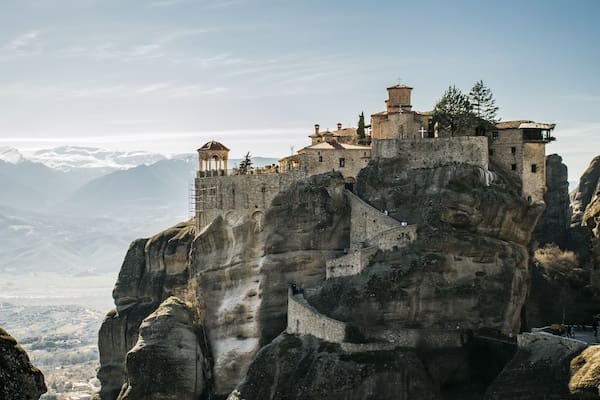
Day trips and tours from Athens
If you are planning to take day trips from Athens, there is an abundance of exciting activities and attractions to explore. Athens has some of the best sightseeing opportunities in the Mediterranean, making it a great base for day trips.
You can easily reach some of the most popular destinations in Greece from Athens. The ancient ruins at Delphi, the grandeur of Mycenae, and the beautiful beaches of the Saronic Gulf Islands are just some of the wonderful day trips from Athens.
Delphi
Spend a full day in classical Greece on this tour from Athens to Delphi. Your knowledgeable guide will take you to the UNESCO World Heritage-listed archeological site of Delphi, which was once thought to be the “Center of the World” in ancient Greece.
Gaze at the awe-inspiring Temple of Apollo and explore the Delphi Archeological Museum, where you can see the Charioteer of Delphi and the Sphinx of Naxos. You can also opt for an upgraded lunch in Delphi (at your own expense) before heading back to Athens, with a stop at the handicraft towns of Arachova and Levadia.
Meteora
Start your day trip from Athens to the Meteora monasteries and Badovas Hermit caves by taking a train ride through the stunning countryside. You have the option to upgrade to first-class tickets.
Upon arrival at the small town of Kalambaka, which rests at the base of the majestic grey rocks and is filled with Meteora monasteries, you will be guided through 3 of the monasteries and the caves of Badovas. Board the train in Athens in the morning and take in the countryside’s beauty as you travel to Kalambaka by noon.
Day trips from Athens offer a chance to explore some of the most beautiful and significant sites in Greece. Whether you are looking for a cultural trip or an adventure, you will find something to suit your needs.
More Athens tips
Next, read our other guides about Athens:

